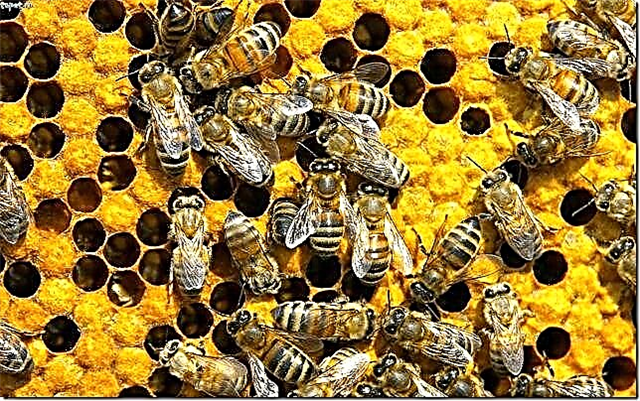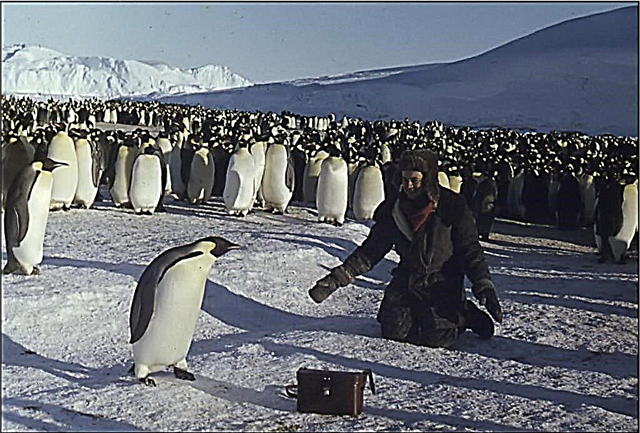Genetics is a very interesting science. Countless professors and researchers of a lower rank have been feeding ordinary people with stories of their achievements for decades. They endlessly discover, clarify, disclose and decipher a variety of things. From the news of genetics, we can learn that bacteria have genes for resistance to antibiotics, why worms from Bermuda glow, how the peoples of Indochina multiplied and interbred in antiquity, and, even, is it ethical yet impossible genetic modification of human embryos. There are no practical solutions in the achievements of geneticists.

Separately, it is worth dwelling on the cloned sheep Dolly, which is much more publicized than any pop star. Not only that, as one of the critics aptly put it, a similar process of obtaining a new sheep with the participation of a ram would take much less time and would be much cheaper than with the participation of scientists. Dolly lived only half of the time allotted to sheep - 6 years instead of 12 - 16 - and she also died of an unknown cause. So, there lived the most famous lamb in the world, was observed by the professors, but it is not known from what died. The question of why a long-term and expensive experiment was started is immediately dismissed as inappropriate - they cloned it! And since then, dogs, cats, and camels, and crocodiles, and macaques have already been cloned, Only somehow the topic of cloning gradually became more and more muffled. Copies of animals could not live happily ever after. Moreover, it turned out that the copies are inaccurate - the environment still affects ...
In our country, genetics has its own history. About her, they say, under Stalin they said that she was a corrupt girl of imperialism, and all genetics were destroyed along with the geneticists. In fact, there was a typical scientific struggle for funding and attention of the authorities. One group of scientists, headed by T. Lysenko, talked about new varieties of plants, increased yields, etc. The other side wanted to engage in pure science, while not promising any quick results or any results at all. And they fought not with all genetics, but with only one of its offshoots, the so-called "Weismanism-Morganism". At the same time, the Institute of Genetics, founded in 1933, did not stop its work. It works now. And the list of achievements of Soviet and then Russian geneticists includes writing a textbook and “a large number of scientific works”. High science has not made anyone happy neither with new varieties of plants, nor with new breeds of animals. She continues to discover and find out. In particular, that:
1. If you are lucky enough to see a butterfly with completely different patterns on its wings, know that it is a hermaphrodite. Due to a genetic malfunction, such a butterfly has both female and male characteristics.
2. In 1993, a girl was born in the United States. The baby was born healthy, but developed very slowly. Numerous analyzes have shown that the end sections of the chromosomes are shortened in the girl's body, which prevents them from connecting with each other. The girl lived to be 20 years old. Her maximum weight was 7.2 kg, her age was estimated at 8 years by the condition of her teeth, and at 11 months by her mental development.
3. In Taiwan in 2006, piglets were bred, whose body glowed in the dark. Scientists have succeeded in introducing a protein embryo obtained from luminous jellyfish into the sow's DNA. The piglets looked greenish even in daylight, and their internal organs could be seen in the dark.
4. Tibetans live peacefully at such an altitude that untrained people from the plains can survive only in oxygen masks. Highlanders have an allele of a gene that increases the hemoglobin content in the blood, so they get enough oxygen even from thin air.

5. King Charles II, the last Habsburg on the Spanish throne, was the descendant of many closely related marriages. He did not have 4 great-grandmothers and great-grandfathers, but only two each. Because of the pain, Karl received the nickname "Bewitched". He lived only 39 years, most of which was sick.
6. Everyone knows that close relationships are not good. But if two people born from incest enter into a relationship, their child will be healthier than the parents. The effect is called "heterosis" - a hybrid of strength.
7. Close-related relations are also useful for cows of the Belgian blue breed. This breed of cows, which give a lot of lean meat, was obtained by accident - in the body of one of the cows a gene was mutated that is responsible for the production of a protein that blocks the increase in muscle mass. They bred this breed without any genetics, and learned about the gene mutation much later. Empirically, it was found out that cows should be mated only with the closest relatives.
8. Madonna's concert team includes a special group of people whose only task is to destroy everything that may contain the singer's DNA. This group carefully cleans hotel rooms, dressing rooms, car interiors and other rooms where Madonna was at least for a short time.
9. Due to genetic differences, East Asians suffer much less from unpleasant sweat odors. It's not even about different genes, but different versions of the same gene. In the "European" version, this gene is responsible for the production of proteins from sweat. The bacteria break down these proteins and create an unpleasant odor. Asians do not excrete proteins with sweat, and there are almost no problems with smell.
10. All cheetahs living on Earth can be descendants of only one pair, miraculously survived the Ice Age. The DNA of all cheetahs is almost identical, while in more common species the coincidence rarely exceeds 80%. That is why cheetahs, despite all the efforts of people, are dying out.
11. A chimera in genetics is an organism in which genetically different cells are present. A typical example is the fusion of two embryos into one. This can lead to rather rare diseases, but most often chimerism can only be detected with a deep blood test. In particular, the American Lydia Fairchild was very surprised to learn that, according to the DNA test, she is not the mother of two already existing children and a third being pregnant. Fairchild turned out to be a chimera.
12. Approximately 8% of human DNA is the remains of viruses, once received by our distant ancestors. One of these remains is found in the DNA of almost all mammals, and is estimated to be 100 million years old.
13. There is a gene, the removal of which could theoretically make a person smarter. It was first found in mice, whose offspring, after removing this gene, became much smarter. Later, the gene was found in human DNA. So far, scientific curiosity gives in to the fear of letting the genie out of the bottle - it is not known what side effects such a modification of a person can lead to.

14. Several years ago, a Swiss citizen could not enter the United States - she could not be fingerprinted due to the complete absence of papillary lines. Fingerprinting turned out to be powerless over addermatoglyphia - the absence of fingerprints as a result of a mutation of the gene responsible for them.
15. Genetic studies have shown that head lice mutated into body lice approximately 170,000 years ago. This led to a conclusion about when people started wearing clothes regularly.









